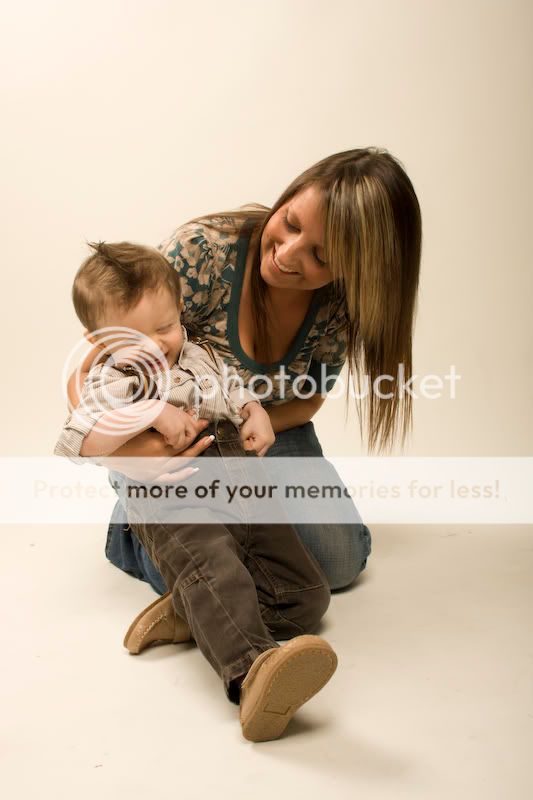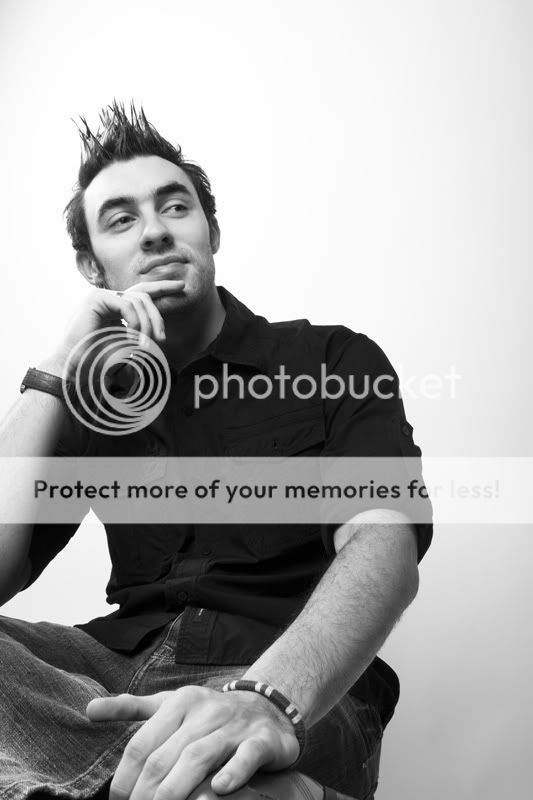Hi guys
I have started playing with taking shots for our clothing eccomerce website but I am frustrated with the results I am getting. I am new to photography but have always harbored an interest.
My setup & equipment:
Sony A200 DSLR
2x Lencarta 200w Probes
White Muslin background
Black Mulsin background
The studio is my living-room which is about 4.3x3.5m. I think I need to take Garry Edwards recommendation and get some reflectors to control the spill ( I wonder if I can use my black muslin for that ?).
Here is what I am trying to achieve http://tinyurl.com/5rv9ke. This is one of my best shots so far (I know its not well styled) http://i520.photobucket.com/albums/w324/MacAddict10/pic04298.jpg
(I know its not well styled) http://i520.photobucket.com/albums/w324/MacAddict10/pic04298.jpg
One of the things I have noticed is that I get better shots when there is more ambient light (during day time). At night I get shots like the following http://i520.photobucket.com/albums/w324/MacAddict10/pic042231.jpg
I have been shooting RAW, typically ISO 100 although I keep seeing a grain effect on my shots (contrast problems ?) and now shooting ISO200.
I have experimented with setting the WB but not seeing much of an improvement, Custom setting typically choose ~7000K.
I have experimented with shooting f8,f11 and f16. I dont have a light meter so I keep turning the dials on the strobe and check the histogram. With these studio shots I am not seeing a difference when I experiment with aperture - my outdoor shots are different and I clearly see the effect on DOF.
I think the camera/setup is limited but I believe I am the weakest link here
Any help much appreciated.
Thanks
I have started playing with taking shots for our clothing eccomerce website but I am frustrated with the results I am getting. I am new to photography but have always harbored an interest.
My setup & equipment:
Sony A200 DSLR
2x Lencarta 200w Probes
White Muslin background
Black Mulsin background
The studio is my living-room which is about 4.3x3.5m. I think I need to take Garry Edwards recommendation and get some reflectors to control the spill ( I wonder if I can use my black muslin for that ?).
Here is what I am trying to achieve http://tinyurl.com/5rv9ke. This is one of my best shots so far
One of the things I have noticed is that I get better shots when there is more ambient light (during day time). At night I get shots like the following http://i520.photobucket.com/albums/w324/MacAddict10/pic042231.jpg
I have been shooting RAW, typically ISO 100 although I keep seeing a grain effect on my shots (contrast problems ?) and now shooting ISO200.
I have experimented with setting the WB but not seeing much of an improvement, Custom setting typically choose ~7000K.
I have experimented with shooting f8,f11 and f16. I dont have a light meter so I keep turning the dials on the strobe and check the histogram. With these studio shots I am not seeing a difference when I experiment with aperture - my outdoor shots are different and I clearly see the effect on DOF.
I think the camera/setup is limited but I believe I am the weakest link here
Any help much appreciated.
Thanks










